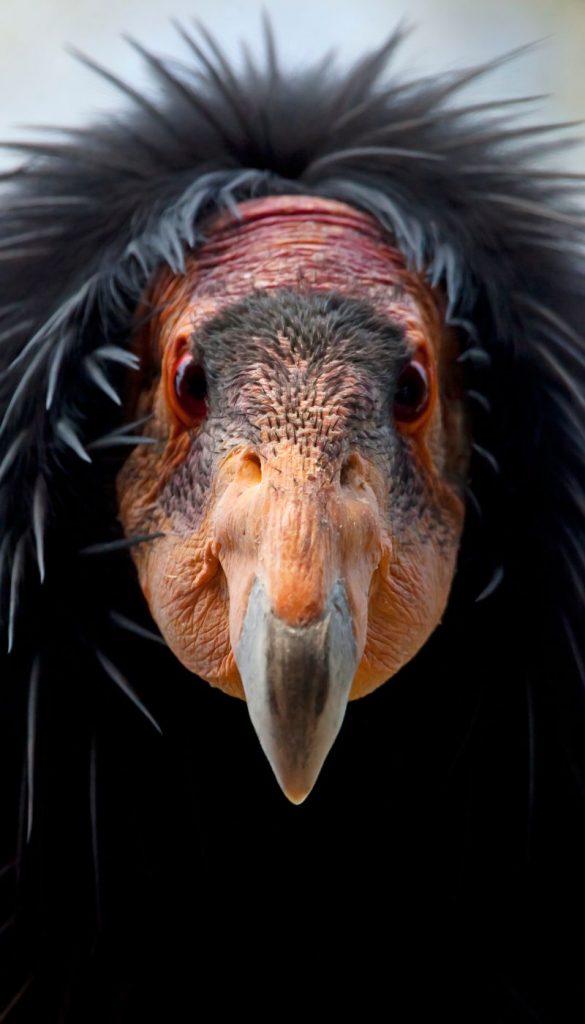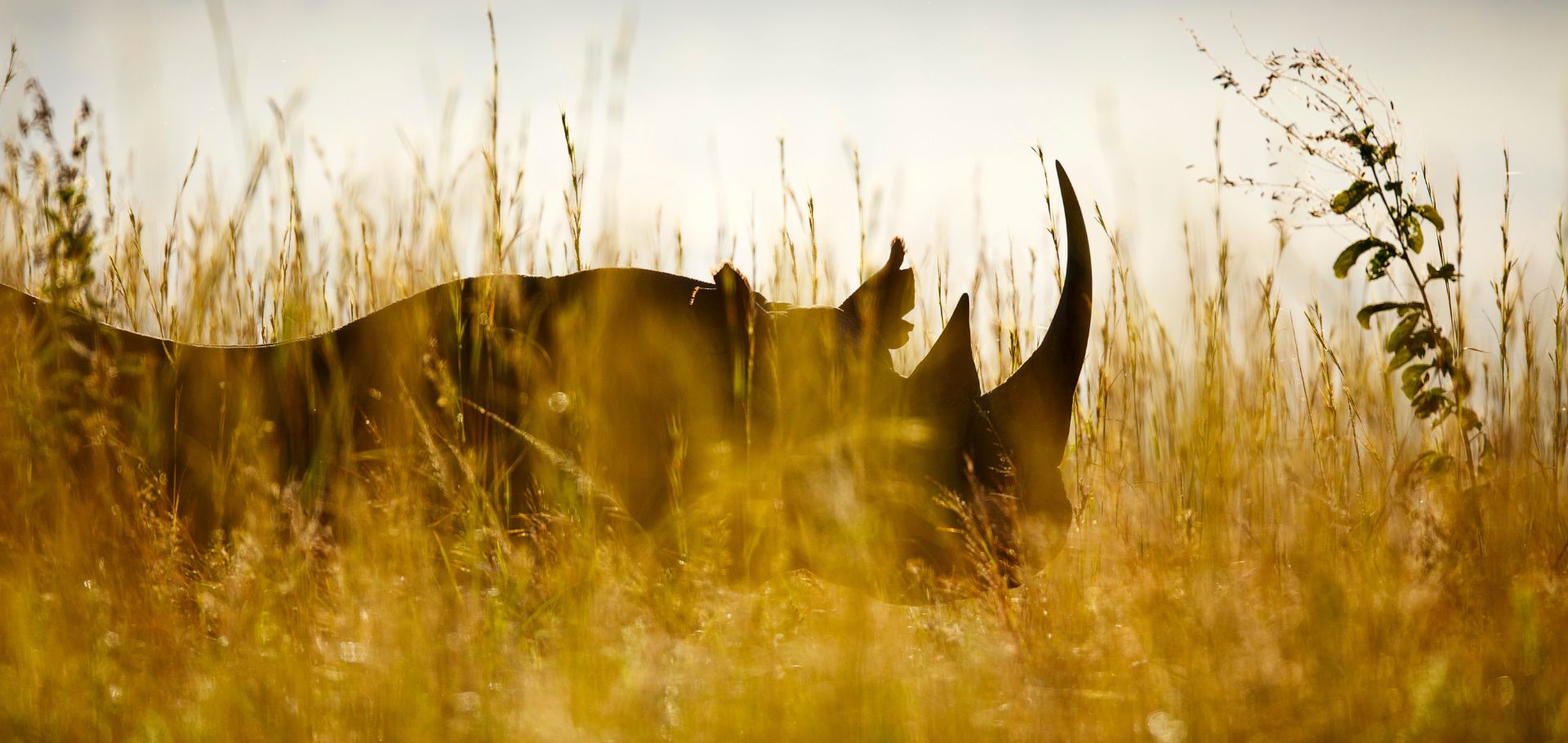In 2019, an independent researcher caught sight of a tiny creature on a trail camera in Northern California’s Sierra Azul Open Space Preserve. Scientists were elated at the unusually long tail and big black eyes; they had not seen the rodent in the area for over 75 years.
The Santa Cruz kangaroo rat is listed as a “critically imperiled subspecies” of kangaroo rat—a small, mostly nocturnal animal that is more akin to gophers and chipmunks than it is to kangaroos or rats. The subspecies is considered a keystone species, meaning its existence is vital to the overall health of the local ecosystem. For example, Santa Cruz kangaroo rats gather and bury seeds and protect these seeds during wildfires so that they can germinate in nutrient-rich soil later on. Its sighting meant so much more than the spotting of a rare animal; it meant hope for a vast web of life.
What are Keystone Species?
Keystone species are essential to ecosystem restoration which is one of the many reasons increasing their populations is crucial. Take jaguars, the Americas’ largest feline. As top predators, they balance the local food chain by maintaining prey populations. But due to habitat destruction and the illegal trade of jaguar pelts and parts, their numbers are in peril. So in 2020, WWF launched a Regional Jaguar Strategy defining 15 priority landscapes. In cooperation with local communities, a range of state governments, and numerous partners, they’re aiming to raise awareness about the importance of jaguars, increase or stability their numbers in these areas, and reduce jaguar killings in the process.
Here are four more keystone species that have or are successfully making a comeback. Read on to learn how their revivals are critical to local biodiversity and what’s being done to assure their safety.
1. California Condor

© naturepl.com / AClaudio Contreras / WWF
Once on the brink of extinction, California condors now soar through America’s western skies above Arizona’s Grand Canyon National Park and Utah’s Zion National Park, featured on Nat Hab Adventures’ Grand Canyon, Bryce & Zion eight-day excursion.
As the largest flying land birds in the Western Hemisphere, they can weigh up to 25 pounds and have a wing-spain of nearly 10 feet. Although these odd-looking avians have been around for thousands of years, in 1982, there were only 23 surviving condors worldwide. This was the result of habitat loss, poisoning, and poaching. Today, 347 wild condors are flying free thanks to an incredibly successful captive breeding and release program led by the U.S. Fish and Wildlife Service.
Not only are these New World vultures remarkable to see— their enormous size, bald heads, and black wings with white patches on the undersides make them easily recognizable—they’re also incredible at cleaning landscapes. They’re known as “nature’s garbage collectors” for their inclination to dine on dead and decaying animals, which would otherwise harm humans and other wildlife.
There are ways travelers can help protect these essential indicators of ecological health. Because litter particles and lead-based pellets can kill condors that ingest them, it’s important to read over the U.S. government’s California Condor Recovery Program initiatives before visiting destinations with Condor habitats.
2. Black Rhinos

© naturepl.com / Tui De Roy / WWF
These keystone species are often called “mega-herbivores” because they feed on enough grasses, shrubs, and plants to shape an ecosystem. They clear brush, making it easier for other wildlife to feed, and create natural waterholes by wallowing in mud puddles. There are five rhino species worldwide, and two—black and white rhinos—across Africa. Black rhinos are smaller than their counterparts and identifiable by their hooked upper lips and two horns; the front horn is larger than the back.
In the 19th century, nearly 850,000 black rhinos roamed throughout sub-Saharan Africa. By 1993, their numbers were approximately 2,475. The bulk of this devastating population loss occurred within the second half of the 20th century when it dropped by a whopping 98 percent thanks to large-scale poaching and the illegal trade of rhinoceros horns.
However, their numbers have been restored to more than 6,000, thanks to efforts by various NGOs, small organizations, local governments, and nearby communities. Since 2013, WWF has worked alongside the government of Namibia and partners like Save the Rhino Trust to help expand rhino protection programs and prevent wildlife crime. We also support aerial population surveys at sites such as the country’s Etosha National Park, where black rhinos are thriving.
Namibia is home to one-third of the world’s black rhino population, and local rhino rangers like Erlyn Tauros—whose knowledge of the local land is immeasurable in protecting against often unpredictable black rhinos as she photographs them and captures data—are working hard to assure their safety. You can also see these amazing creatures on Nat Hab’s 10-day Great Namibia Wildlife Safari, which includes rhino tracking in the company of Save the Rhino Trust experts.

© Scott Larsen. Conservation staff on Great Namibia Wildlife Safari
3. Humpback Whales
If you’ve ever kayaked Alaska’s Inside Passage in the presence of a humpback pod or seen the whales performing acrobatics in Antarctic waters, the thought of a world without these deep-diving marine mammals is unimaginable. But by the mid-1980s, the number of humpback whales south of the equator had shrunk from tens of thousands to approximately 440.

© Shutterstock / Seb c est bien / WWF
Thankfully, a ban on commercial whaling in 1986 has restored the southern hemisphere population to more than 80,000. As a keystone species, these playful and curious creatures have a profound effect on the ocean. They stabilize the food chain by cycling nutrients through the ecosystem and storing away carbon when they eat. In a phenomenon known as “wale fall,” when the humpbacks die, the stored carbon sinks with them to the ocean floor, cooling the planet and providing nutrients to deepwater species.
Because humpback whales make one of the planet’s largest migrations, World Wildlife Fund has partnered with scientists and researchers from Oregon State University, the University of California Santa Cruz, the University of Southampton, and others to determine the best ways to protect and manage their habitats. Our 2022 Protecting Blue Corridors report includes such solutions as “moving ships away from critical whale habitats where possible” and “clean[ing] up ‘ghost gear’—abandoned, lost, or otherwise discarded fishing gear.”
Nat Hab offers plenty of opportunities to see these globetrotters in action, including an eight-day Whales & Nature Trails of Quebec adventure.
4. Mountain Gorillas

© naturepl.com / Eric Baccega / WWF
As one of the world’s largest living primates, mountain gorillas are big and beautiful. We share about 98% of our human DNA with these majestic creatures—while this is an interesting fact, it’s a reality that makes them highly susceptible to disease. Poaching, deforestation, and war have also vastly threatened their numbers since German officer Captain Robert von Beringe first discovered the subspecies in 1902 in East Africa’s Virunga Mountains.
By 1989, there were only 620 mountain gorillas in existence. Their numbers were split between the high forests (between 8,000 to 13,000 feet in elevation) of the Virunga Mountains and Uganda’s Bwindi Impenetrable National Park in Uganda. Today, there are more than 1,000 members of this keystone species. Mountain gorillas act as seed spreaders and let light into the forest as they move, allowing sun-loving plants to grow.
To prevent further habitat destruction and promote positive environmental logging practices, WWF works with governments throughout the Congo Basin along with timber companies and international lending institutions. Additionally, the long-running African Great Apes Programme aims to stop the illegal trade of gorilla bushmeat. The program has invested in increasing support for ape conservation throughout the area, including supporting mountain gorilla tourism. Money earned from visitors goes toward species protection while you gain an unforgettable experience!
There’s no better way to see the gorillas than on Nat Hab’s 10-day Great Uganda Gorilla Safari. The trip takes travelers into the heart of the action with two full days of gorilla trekking in Bwindi.

© Russell Gerber. Travelers and their Expedition Leader relaxing while on the Great Uganda Gorilla Safari































